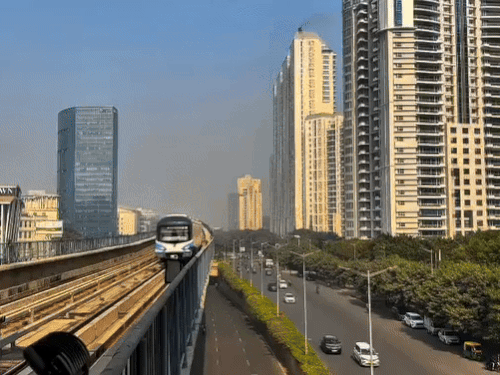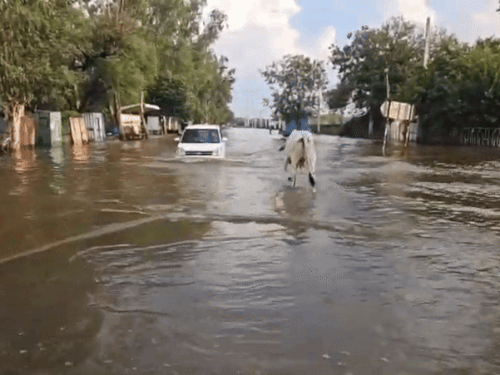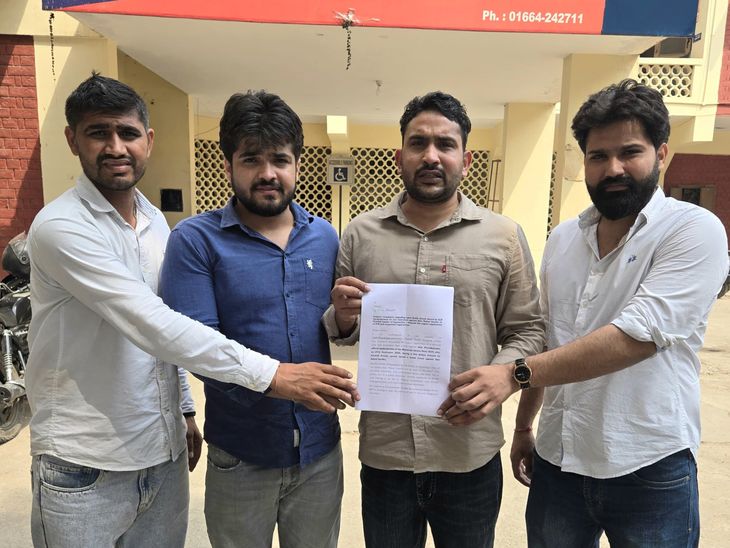
The Rapid Metro passing through the posh areas of Gurugram is now being liked by the Elite Passenger.
Between increasing jams and waterlogging in Gurugram, the elite passengers of posh area are leaving the fascination of their expensive car and are now making the journey their choice in the Rapid Metro. The number of passengers has increased by 13.59% this year compared to the first quarter of the last financial year.
,
Encouraged by the increase in the number of passengers, Haryana Mass Rapid Transport Corporation has started the process of withdrawing the Gurugram Rapid Metro system from Delhi Metro (DMRC). It will be handed over to Gurugram Metro Rail Limited by HMRTC (Haryana Mass Rapid Transport Corporation). Rapid metro will be operated and maintained jointly by DMRC and GMRL (Gurugram Metro Rail Limited) until full responsibility is found.
Joint committees formation Joint committees have been formed to facilitate this transfer and the transfer of reference (TOR) has been set. System and fixed time-limit are being finalized to ensure smooth acquisition and passenger services.
Number of passengers and fare revenue increased The first quarter of this year saw an increase in the number of passengers from April to July 2025. A total of 62.49 lakh passengers used rapid during this period, which is an increase of 13.59% compared to the same month of 2024. Fare revenue has also increased by a rapid increase of 11.87%.
Decision taken in board meeting This historic decision was announced at the 62nd board meeting of Haryana Mass Rapid Transport Corporation held on Monday under the chairmanship of Chief Secretary and Chairman of Corporation Anurag Rastogi. The meeting also revealed the exceptional performance of Rapid Metro Gurugram.
Reduction in operational expenditure Chandrashekhar Khare, managing director of Haryana Mass Rapid Transport Corporation Limited, said that with better operating efficiency, the corporation recorded a decline of 6.33% in operational expenditure, helping HMRTC to achieve a better financial balance.
Advertisement is also earning HMRTC has further strengthened its income from non-Kiraya sources, demonstrating successful revenue diversification strategies. There has been an increase in income from rent, marketing and advertising rights, which reached ₹ 21.11 crore between April and July 2025. Whereas in the same period last year it was ₹ 15.56 crore.
Successful e-auction of 22 advertising sites on metro bridges and pillars alone is expected to generate an estimated annual revenue of ₹ 58.34 crore. In which the HMRTC part is judged by more than ₹ 35 crore.
DPR of Delhi-Rohtak Namo Corridor will be made The board also reviewed the significant progress of several major metro and rapid railway projects across the region. The National Capital Region Transport Corporation (NCRTC) has started preparing a detailed project report (DPR) for the proposed Delhi (Munirka) -Rohatak Namo India Corridor. This ambitious corridor will add Delhi IGI Terminal 1, 2 and 3, Yashobhumi (Dwarka Sector-25), Najafgarh, Bahadurgarh and Rohtak.
Gurugram-Faridabad-Greater Corridor approved Gurugram-Faridabad-Noida/Greater Noida Namo Bharat Corridor was approved in a meeting chaired by the Chief Minister on the formal request of NCRTC. Work on its DPR has started. Which will connect the cities of NCR.
Changes in Delhi-Panipat-Karnal Corridor The Delhi-Panipat-Karnal Namo Bharat Corridor is also growing rapidly, and its revised DPR is actively under consideration by the Ministry of Housing and Urban Affairs. In December 2020, the project, initially approved with 103.02 km long sections and 17 stations, is now expanded to 136.30 km with a provision of 21 stations. The revised DPR has an estimated cost of perfection of ₹ 33 thousand 51.15 crore, in which Haryana’s share is estimated at ₹ 7 thousand 472.11 crore, and better financial and economic benefits have been promised.
Delhi-Gurugram Bahrod project awaits for ministry approval The DPR of the Delhi-Gurugram-Nimrana-Bahrod (SNB) Namo India Corridor is also under consideration by the Ministry, which is important for Haryana in the expansion of high-speed regional connectivity in the National Capital Region.



